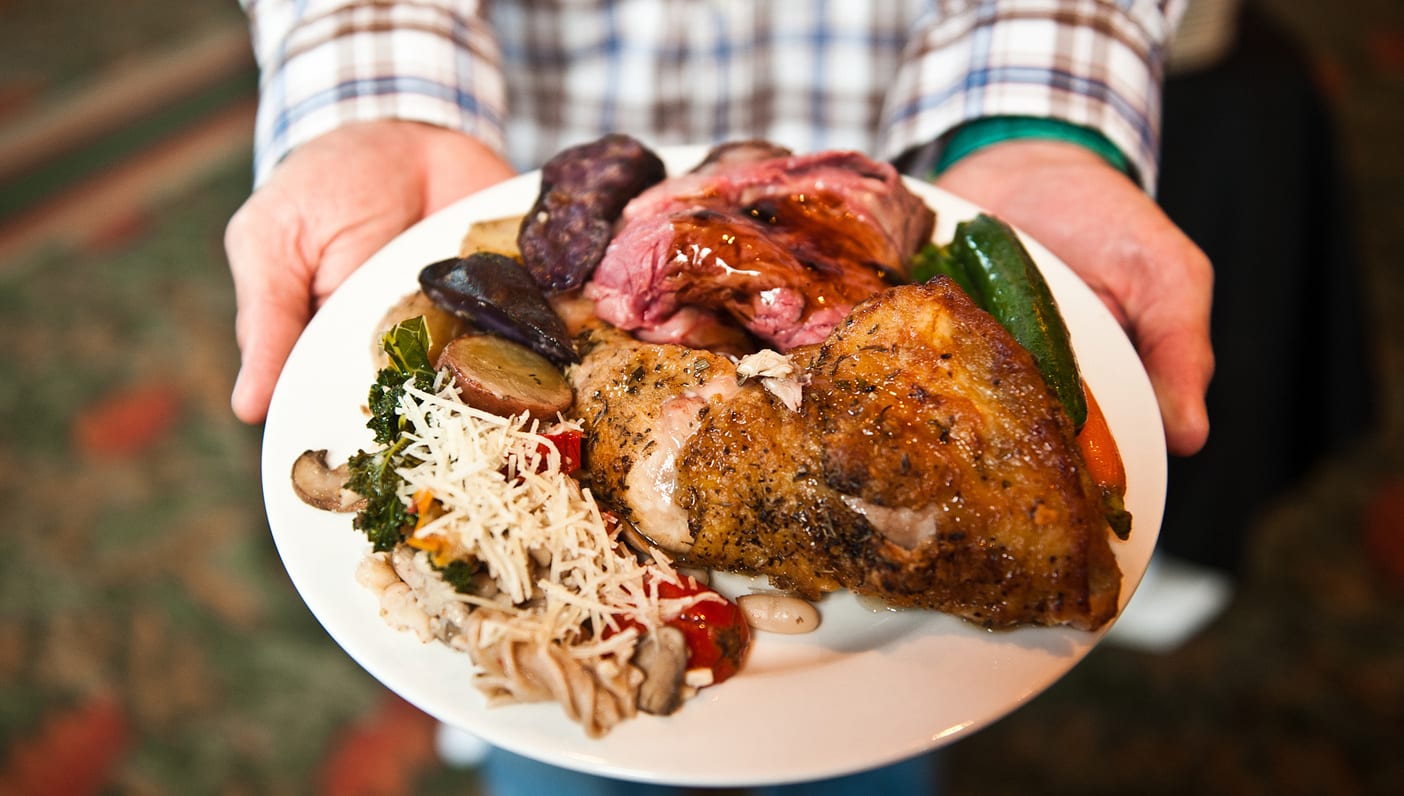
Food labels and restaurants are stepping up their game, with more and more products and restaurants providing nutritional information to consumers. Next up on the list? Sodium.
By the order of the New York City health department, chain restaurants with 15 or more locations must start labeling foods with over 2,300 milligrams or more of sodium. The new ruling goes into effect this Tuesday.
From NPR:
That’s the recommended daily limit for sodium, but most Americans consume far more. And top contributors are foods we tend to eat when we’re dining out, including pizza and deli sandwiches. In fact, surprisingly, they’re among the six most popular foods that add unexpectedly high levels of sodium to our diet, according to the American Heart Association. Store-bought bread – which many of us eat several times a day — is another big offender.
Some of the other foods include canned soup, poultry, and cold cuts. This means that an innocent meal of a turkey and cheese sandwich turns into a double-whammy of sodium. New York City will be the first in America to issue a sodium warning, but the rule applies to all restaurants that exceed the 15 or more limit.
Why watch sodium? While it might add some flavor, overconsumption of sodium can lead to an increased risk for osteoporosis, stomach cancer, high blood pressure, stroke, and heart disease.
Health officials hope to see the new ruling increase transparency when it comes to dining out at restaurants. Most Americans don’t realize how much sodium they’re consuming, and the new rule will could potentially help diners develop a more honest understanding of the nutrition behind menu items.
Based on recent evidence from Johns Hopkins University, the labels should aid in highlighting healthier food items. The study, published on the Journal of Nutritional Education and Behavior, illustrated that labeling food as low-sodium, low-fat, or lower-sugar-content, helped to increase sales.
The study used two stores to investigate their initial hypothesis. The Johns Hokpin’s Hub website analyzes the results:
One store implemented the Eat Right—Live Well! campaign, which was designed to promote healthy food purchasing. The other was used as a control for comparison. Investigators examined sales data over a three-year period both prior to and after the interventions were in place. The Eat Right—Live Well! interventions included special signage and product labeling, employee training, nutrition education, community outreach, and in-store taste testing.
Overall, the researchers saw a 28 percent increase in the sale of “high-fidelity” foods in the intervention store compared to a 6 percent increase in the control store during the study period.
These “high-fidelity foods” consisted of products in which the item’s healthy quantities were identified through labeling over 75 percent of the time. In other words, the healthy-labeled foods were more likely to be purchased than the non-labeled foods.
While not everyone has the time to cook a healthy meal at home, having access to nutritional information will help consumers develop a better understanding of the food at at their favorite restaurants.
—

Amanda Kohr is a 25-year-old writer and photographer with a penchant for yoga, food, and travel. She prefers to bathe in the moonlight rather than the sun, and enjoys living in a state of the three C’s: cozy, creative, and curious. When she’s not writing, you can find her driving her VW Bug, looking for the next roadside attraction or family diner. She also roams the internet at amandakohr.com and through Instagram.
